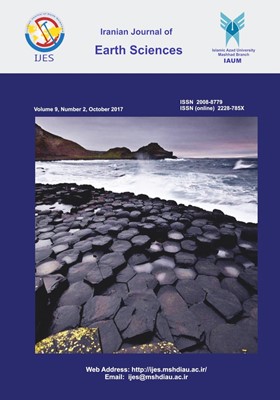The Sungun porphyry magma resource and the 120,000-year difference in age between the main stock and the first dike: New evidence from 87Sr/86Sr, 143Nd/144Nd and Pb, SHRIMP U–Pb zircon dating in NW Iran
Subject Areas : Mineralogy
1 - Department of Geology, Payame Noor University, Tehran, Iran
Keywords: Sungun, Porphyry copper deposit, NW Iran, Azerbaijan,
Abstract :
The Sungun copper porphyry deposit is hosted by a Tertiary magmatic complex in the Azarbayjan province , northwestern Iran. The Sungan mine in its southern and eastern parts is limited by early Miocene volcanic and by Late Cretaceous limestone rocks in northern and eastern parts respectively . The Sungun deposit is associated with a suite of porphyritic granitoids and late dikes intruding within Oligo-Miocene andesitic and upper Cretaceous limestone. The Sungun porphyry system developed in multi-stage, central intrusive rocks of the early Miocene age in the Tertiary Arasbaran Magmatic Zone (AMZ). A late post-mineralized dike (DK1a) is the first dike system after the replacement of the Sungun porphyry. It has been dated with a 20.57±0.27 Ma (±2 σ). New zircon SHIRIMP U-Pb data indicates that the Sungun porphyry crystallized within the time span from 20.69±0.37 Ma (±2 σ), and the Sungun porphyry and DK1a represent a near-dated intrusive with an age difference of about 0.12 Ma (120,000 y). Their range of 87Sr/86Sr ratios (0.70467 to 0.72278), 143Nd/144Nd ratios (0.51275 to 0.51214), 87Rb/86Sr (0.67497 to 0.67415 values), lead isotopes ranges from 18.67 to 18.86, 15.65 to 15.66, and 38.93 to 39.06 for the ratios of 206Pb/204Pb, 207Pb/204Pb, and 208Pb/204Pb respectively, suggest the high contributions of depleted mantle-derived magmas in the generation of Sungun stock, but crustal-contaminated origin for monzonitic body in late magmatic activities in the area. This study shows that the source of the Sungun stocks is categorized in the upper crust, typically similar to the source of porphyry deposits.

